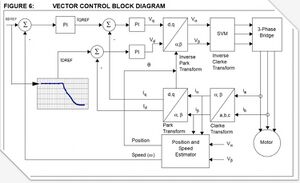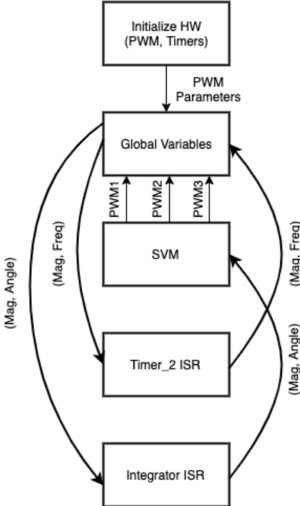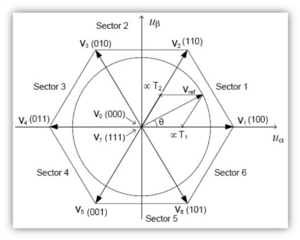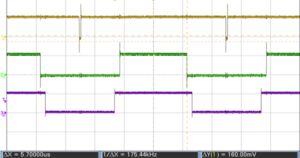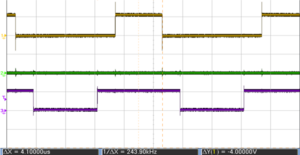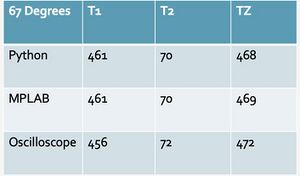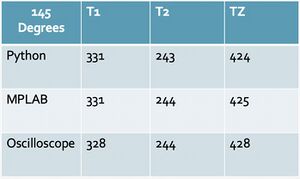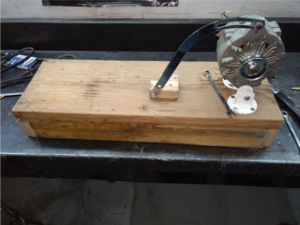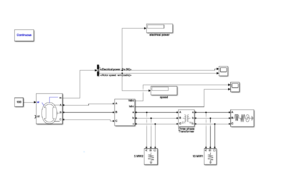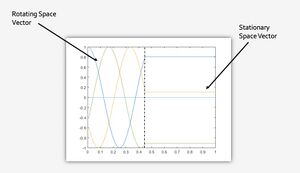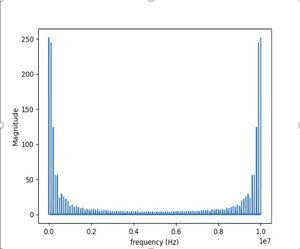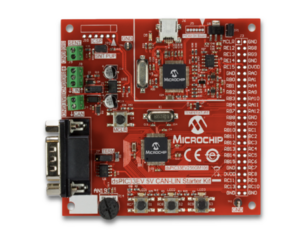Electric Two-Wheeler
| Sponsors | Dr.Herb Hess & Dr.Joseph Law |
| Team Name | King of the Hills |
| Duration | Spring 2019 - Fall 2019 |
| Mentor |
|
| Team Members |
|
The goal of the project is to design a controller for an alternator being used as a motor. As proof of concept, the entire system will be mounted on a bicycle to assess its performance in the rolling terrain of the Palouse.
Problem Definition[edit | edit source]
Design a motor controller that will test the limits of an alternator as a motor; compare its motor capabilities to its generator capabilities.
The first proof of concept is a DC generator load for fine control of steady state power output. The second proof of concept is an Electric Vehicle load to test our controller under heavy transients.
Specifications[edit | edit source]
Alternators have good power density and cost-effectiveness as generators. These power values will give us the specifications for our performance standards when running our alternator as a motor. The controller design will have to be determined through capable modeling and experimentation.
However, the only initial requirement is that the system performs. That is, by any means available the controller should be able to start and reliably power the alternator under load. From here, we will be able to improve our design, bringing the performance values closer to those of the generator.
Project Learning[edit | edit source]
Implementation in c
Scheduling, fastest to slowest:
- PWM counter (〖𝑓𝑟𝑒𝑞〗_𝑠𝑤=80𝑀𝐻𝑧/(𝑐𝑜𝑢𝑛𝑡𝑠 𝑝𝑒𝑟 𝑑𝑢𝑡𝑦 𝑐𝑦𝑐𝑙𝑒))
- Space Vector PWM updater (𝑓𝑢𝑛𝑑𝑎𝑚𝑒𝑛𝑡𝑎𝑙/𝑟𝑒𝑠𝑜𝑙𝑢𝑡𝑖𝑜𝑛)
𝑟𝑒𝑠𝑜𝑙𝑢𝑡𝑖𝑜𝑛=(𝑠𝑚𝑎𝑙𝑙𝑒𝑠𝑡 𝑠𝑡𝑒𝑝 𝑖𝑛 𝑑𝑒𝑔𝑟𝑒𝑒𝑠)/360
Example: 50Hz fundamental (1500 RPM), 3 degree smallest step, 6 kHz updates - Frequency updater
Change the fundamental frequency
Change the fundamental frequency
Example: 50 Hz to 60 Hz using a push-button
Fixed point multiplication
- Example: divide 50 by pi
- First, express 𝜋^(−1) as a multiple of 2^(−11)
1/𝜋≅652∗2^(−11)
50/𝜋≅50∗652∗2^(−11)=(50∗652)≫11=15.918
Actual answer: 50/𝜋=15.9155
Dividing by powers of 2 is simply a right shift - Maximizing resolution
16-bit architecture
Q-number format
Moving the point to where as many fractional bits are assigned as possible but no more
Final Design[edit | edit source]
| Picture | Info |
|---|---|
| Source: Microchip®, Sensorless Field Oriented control of a PMSM
|
FOC in two minutes
|
| |
Data flow diagram |
| |
Space Vector Theory
Phasors: Describe a single sinusoidal output, with the same frequency as the reference, but with variable magnitude and phase
Each possible combination of the switching states is a unit vector in voltage space (for a voltage regulator) or current space (for a current regulator)
|
Validation[edit | edit source]
| Method | Result |
|---|---|
| Python SVM Simulation | 67degrees 145degrees |
| MPLAB | 67degrees 145degrees |
| Oscilloscope | 67degrees 145degrees |
| Compare Three Methods | 67degrees 145degrees |
Team Members[edit | edit source]
| Picture | Info |
|---|---|
Vol_Wold
| |
Armando_Solis
| |
Hai_Huang
|
Additional Documentation[edit | edit source]
Meeting Minutes
File:2-27-2019 Minutes.pdf
File:3-6-2019Minutes.pdf
File:3-20-2019Minutes.pdf
File:3-27-2019Minutes.pdf
File:4-3-2019Minutes.pdf
File:4-10-2019Minutes.pdf
File:4-24-2019Minutes.pdf
Tech Presentation
File:Tech presentation.pdf
Machine Test[edit | edit source]
| Picture | Name | Description |
|---|---|---|
| Machine Test | Magnetization Curve Test
Procedure: Turn the machine at constant speed and record Ea as a function of If. Results: gives data to the constant relationship between Ea and ω for all pre-saturation values of If. Rotor and Stator Tests Procedure: Place AC and DC on rotor or stator and use the resulting current outputs to determine Ls, Lr, Rs, and Rr. |
Simulation[edit | edit source]
| Picture | Name | Description |
|---|---|---|
| simulink | Matlab, simulating different synchronous machines to observe date of machine. The purpose is to help us to build control system. | |
| simulink |
| |
| simulink |
|
Microcontroller[edit | edit source]
| Picture | Name | Description |
|---|---|---|
| Microcontroller | Model: dSPIC33EV
Application: Motor control via the PWM Module Features: 16-Bit Architecture Pin Count: 28 Six Pulse-Width Modulation Outputs |
Snapshot[edit | edit source]


